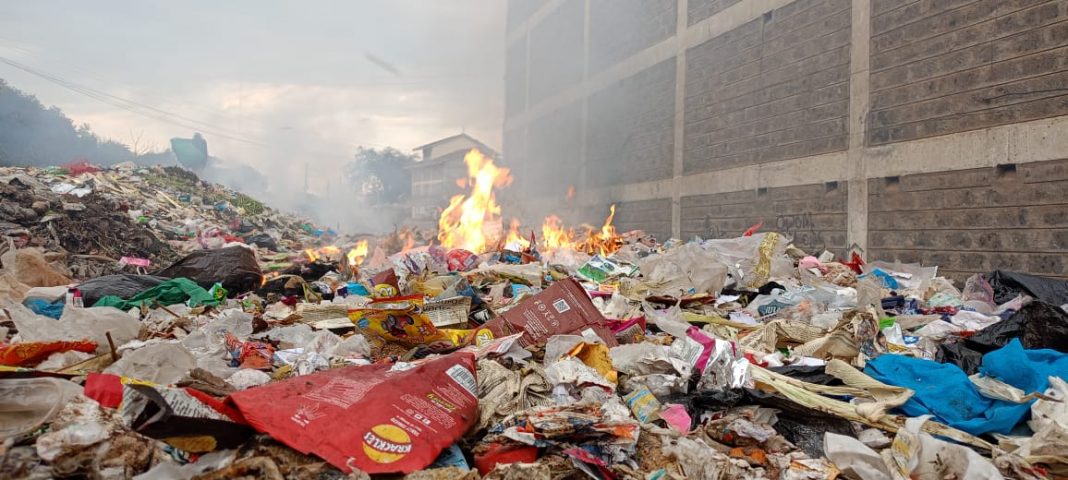By Thuku Kariuki and Daniel Furnad
When one thinks of air pollution, the imagination usually focuses on extreme cases. Urban smog in Los Angeles or New Delhi. Belching coal plants in Germany or Bulgaria. Wind from the desert blowing sand over cities in West Africa from the Sahara, or coming toward Beijing from Mongolia.
But there are everyday pollutants that affect air quality all over the world. An enormous effort is being made to track air pollution and measure its effects on human health.
The State of Global Air is a report produced by over 17,000 researchers. They rely on data from the Global Burden of Diseases (GBD) that produces global estimates of the impact of 88 environmental, behavioral, and dietary risk factors on health. The survey spans 204 countries and territories and has been ongoing since 1990.
The latest report, including much critical analysis, has recently been released. It includes some startling statistics concerning the effects of what we breathe. But it also provides some encouraging information on action being taken to ensure cleaner air, as well as calls for action to continue such efforts.
The report certainly gets one’s attention when pointing out that air pollution is the second largest risk factor for early death. Only high blood pressure is more deadly. Almost 8 million people died from non-communicable diseases caused by particles in the air, 1 in 8 deaths worldwide.
So, what is in our air that is so harmful to our health? Fine particle air pollution, known as ambient PM2.5, is the top threat to our respiratory system. This pollution comes from vehicles, residential fuel use, coal-burning power plants, agricultural and industrial activities, waste burning, wildfires, and many other human and natural sources. Among the air pollutants that are currently measured, long-term exposure to PM2.5 is the most consistent and accurate predictor of poor health outcomes across populations.
Fine particle pollution is produced both outdoors and indoors, with cooking and heating accounting for most of this indoors. These harmful substances are responsible for 8% off all deaths worldwide. They cause non-communicable diseases, from cardiovascular problems, even heart attacks, to respiratory diseases, type 2 diabetes, adverse reproductive outcomes, cancers, neurodegeneration and problems with brain development, and skin aging.
These are particularly dangerous to older people, who have had long exposure to fine particles, and children, whose immune systems are not fully developed. Babies still in the womb are also adversely affected, often resulting in low birth weights or premature births.
The second largest cause of air pollution is Ground-level, or tropospheric, ozone. This pollutant harms human health, damages plants, and contributes to climate change. Ground-level ozone is not released directly into the air but is formed through chemical reactions between nitrogen oxides and volatile organic compounds (VOCs) in the presence of sunlight. These precursor chemicals are released through the burning of fossil fuels in vehicles, power plants, factories, and homes. They are also produced through industrial activities such as oil and gas extraction and processing, and from some natural sources such as trees.
Finally, there is nitrogen dioxide. It comes from transportation, power generation, and industrial activities. Sub-Saharan Africa actually has the lowest exposure to nitrogen dioxide.
The World Health Organization (WHO) has put out guidelines for cutting exposure to these harmful substances in our air. And there has been action taken by responsible nations. In 2024 alone, the United States, the European Union, Brazil, and Uganda announced stricter air quality standards and regulations.
In China, the Combined Heat and Power Policy (CHP) launched in 2015, which banned household coal burning and provided subsidies for clean electric or gas-powered heating for millions of peri-urban and rural households, has resulted in marked cardiovascular health benefits.
African nations have taken action to promote clean cooking and cut down on the fine particles released indoors. Cote d’Ivoire, Kenya, Lesotho, Nigeria, and the Republic of the Congo saw the fastest rates of progress toward clean cooking, accounting for two-thirds of all new clean cooking access in East, West, Central, and Southern Africa between 2018 and 2023.
Ghana’s Environmental Protection Authority passed new laws in June of this year. The regulations seek to control air emissions from mobile, diffuse, stationary and point sources, including motor vehicles, industrial, commercial, domestic, construction, agricultural and waste disposal. The new rules also facilitate the enforcement of the Ghana Standard for Environment and Health Protection-Requirements for Ambient Air Quality.
Progress is being made here in Africa and across the globe. But the burden of noncommunicable diseases is large and growing, in part due to aging populations. This needs more strategies to mitigate these long-lasting and debilitating conditions. With reliable information, broad awareness, and a shared commitment to a better future, it is never too late to take action to create cleaner air for future generations.
The report has a companion interactive website with tools to explore, compare, and download data and graphics. Anyone can use the website to access data for cities and countries around the world and track long-term trends for air pollutants and associated health impacts.






